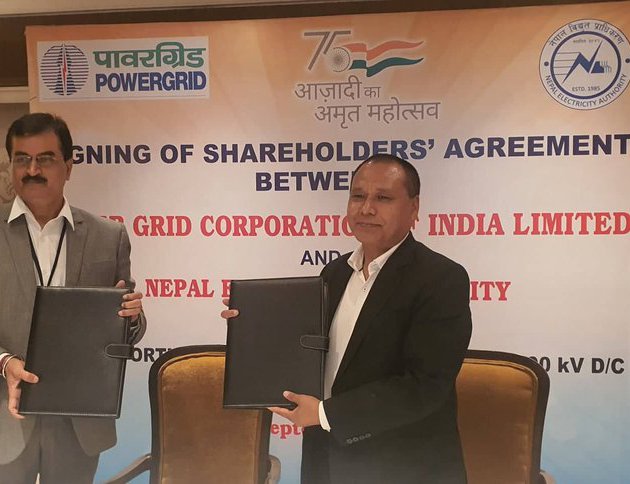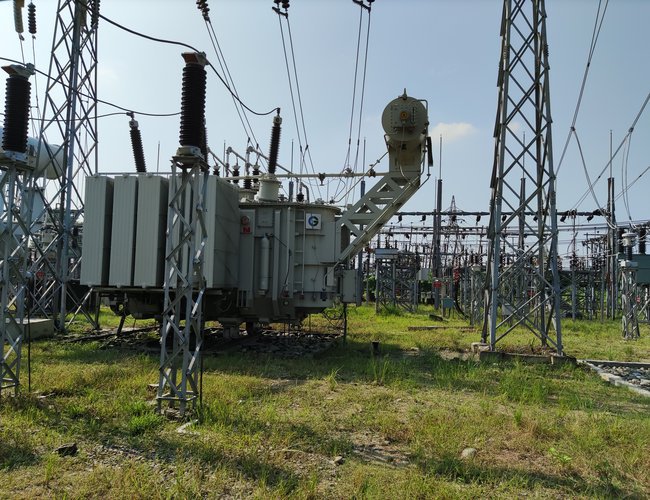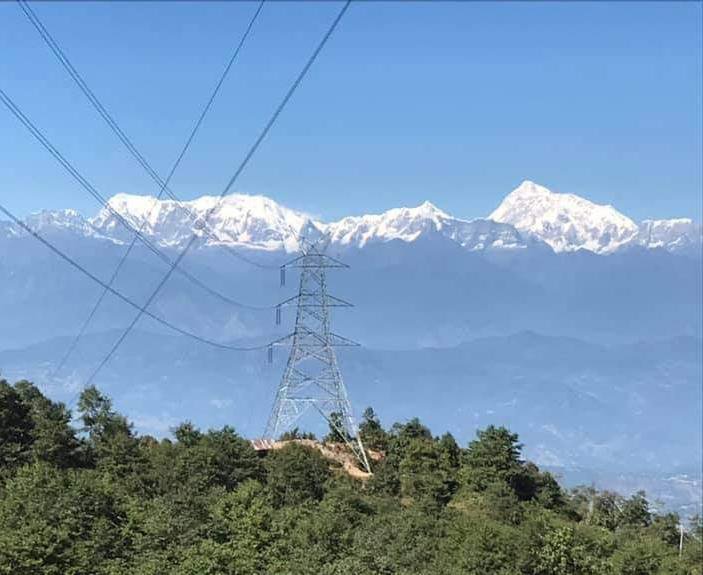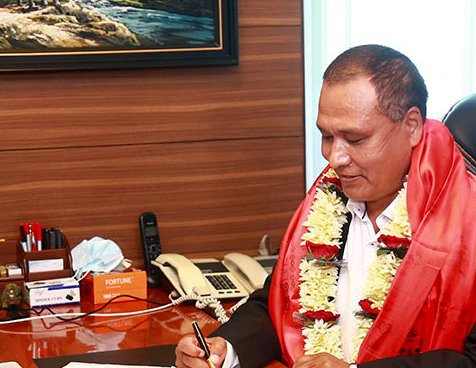
As policies are influenced by sentimental issues, Nepalese leaders have rarely noticed the economically beneficial issues Nepal can discuss with the Indian leadership.
At a time when Nepal’s officials at energy ministry and NEA have been negotiating with Indian officials to open the market worth billions of rupees of electricity, Nepalese leaders and government have indulged in issues such as the death or killing of Nepali in Darchula in the Nepal-India border.
Instead of taking realistic and beneficial issues for discussion by both the countries, Nepal’s move to raise the irritants, like in the border event, undermines other important issues like electricity market. Political leaders and government officials seem to prefer harping on minor sentimental issues as always.
With surplus electricity in hand, Nepal Electricity Authority (NEA) officials have spent a lot of time and effort requesting the Indian authorities to purchase Nepal’s surplus electricity of over 800 MW in wet season.
Although India has been passing through a severe shortage of electricity, Nepal is yet to convince Indian authorities to purchase the electricity generated in Nepal. Given the state of relations at the top, Indian reluctance is understandable.
Taking many other sensational issues, this summer has gone without making any progress for export of surplus electricity. Given the current electricity crisis in India, Nepal may go for power cut in coming winter season if India imposes restriction on export.

Nepal Surplus Electricity
There has been an electricity exchange between Nepal and India since 1971. Following the completion of the Upper Tamakoshi Hydropower Project and its power getting connected to the national grid, Nepal has around 400 MW surplus electricity which has remained unconsumed in the night.
In day time only, the reserve electricity is 200 MW. As more projects are completing, NEA has been facing the problem of more power surplus since the last two months.
Managing Director of Nepal Electricity Authority (NEA) Kulman Ghising said that Nepal is self-sufficient on electricity following the completion of the 456 MW Upper Tamakoshi. At a time when such a big volume of power gets wasted, the NEA is incurring a daily loss equivalent to Rs 40 million.
With the growing energy crisis, India could be the best market for surplus power. In his recent visit to India, MD Ghising urged Indian officials for facilitating finding an accessible market for the surplus power from Nepal. The NEA delegation discussed with the Indian side about exporting surplus power from Nepal to India and importing power from India during the lean period.
Nepal-Bihar Initiative
NEA has proposed Bihar State for mutual seasonal power exchange arrangement between the two countries. As per the proposal, NEA will export electricity to Bihar during rainy season and import electricity from Bihar during winter.
"We submitted the proposed to supply the surplus electricity to Bihar during monsoon and to import it from Bihar during winter. We have also proposed what to do with unequal electricity exchange between Nepal and Bihar.”
NEA has proposed Bihar State Power Holding Company Ltd for mutual electricity exchange to avoid the wastes of electricity in Nepal and fill the shortfall in Bihar’s grid.
NEA MD Ghising said that Nepal can supply 200 MW electricity to Bihar round the clock during the rainy season. Nepal can supply additional electricity from 11 PM to 6 AM. He said that arrangement for the payment will be made on the basis of volume of sharing of electricity through mutually accepted appropriate mechanism.
“We have received positive response from Indian side. If this kind of mutual power exchange arrangement is made, it will be a major milestone between the two countries in the history of power exchange.”
According to MD Ghising, Nepal has 700 units of surplus energy in remaining three months and there will be 3.79 billion units of surplus electricity during summer.
During winter, Nepal needs to import the same volume of electricity.
Currently, Nepal and Bihar’s grid is connected through 33 kV and 132 kV transmission lines.
These infrastructures can exchange up to 371 MW of power. NEA has informed North Bihar Power Distribution Company to supply electricity through Raxaul, Dhalkebar-Mujjafarpur grid.
From Power Starved To Self-Reliant
Until 2017, Nepal was power-starved, facing outages up to 18 hours a day. The country now has surplus energy, but it does not have a concrete plan to export power.
NEA has reached the power purchase agreement with 346 hydropower projects to purchase 6,176 megawatts of electricity. Of them, 111 projects with 1,300 megawatts have been into operation. Likewise, 136 with 3,034 megawatts are under construction.
And other 99 with 1,841 megawatts are under the financial closing process, said the NEA.
“We have sent a request to India’s Power Ministry for exporting electricity from Nepal detailing how much energy from which hydropower projects we can export,” said Suresh Bahadur Bhattarai, spokesperson for the NEA.
With no avenue to export, some power plants have been cutting down electricity generation, which experts say is a paradox in a country like Nepal that was suffering from outages just until a few years ago.
MD Ghising said that the wastage of electricity in monetary terms is around Rs1.8 billion in the last month and a half if calculated at an average selling price per unit of Rs.9.5.

Indian Response
NEA’s officials are hopeful that Nepalese electricity will find entry in India.
India has opened its power exchange market for Nepal only for buying electricity in April. The agreement does not have provision to import Nepalese electricity through the 400kV Dhalkebar-Muzaffarpur Cross Border Transmission Line.
Allowing Nepal as a first country to participate in the Indian Energy Exchange (IEX) among all other neighbors, India has shown good gesture.
The charging of 400kV Cross Border transmission line between Nepal and India, from Dhalkebar to Muzaffarpur paved the way for power import/export from/to India through the IEX.
Under the two separate electricity trading arrangements, Nepal is trading electrify with India. Under a power exchange mechanism, Nepal is selling electricity to Bihar and Uttar Pradesh states of India. Under second mechanism, two countries can buy power from each other when the power is needed.
Even though the Indian Power Ministry is yet to open its door for Nepal’s electricity in the Indian power market and allow Nepal to participate in the daily bidding process to sell electricity, Nepal’s power utility body had participated in a bid to sell 40MW electricity to the Indian state of Punjab in May.
Internal Consumption
Although Nepal’s market has been expanding, it is too small to consume all the electricity generated within the country. According to NEA’s annual report 2021, the number of electricity consumers of NEA has been increasing gradually over the years. The number of consumers has increased by 7.37 % in the year gone by from 4.22 million to 4.53 million last year with 0.55 million consumers. In rural areas the consumers have reached 5.08 million.
The total population with access to electricity based on the number of consumers has reached 85% of total household in FY 2020/21. This is going up this year. NEA’s hydropower plants including small power stations generated a total of 2,810.74 GWh of electricity in FY 2020/21, a slight decrease by 6.96 % over the generation of 3021.04 GWh in FY 2019/20.
The total power purchased from Independent Power Producers (IPPs) within Nepal was 3,241 GWh, an increase by 8.36 % from the figure of 2,991 GWh in the FY 2019/20.
The total energy imported from India was 2,826.21 GWh in FY 2020/21 as compared to 1,729 GWh in FY 2019/20, an increase by 63.45 %. The total energy in the system increased by 14.68 % to 8,877.95 GWh over the corresponding figure of 7,741 GWh in FY 2019/20.
India’s Power Crisis
Rising global energy prices are causing a huge spike in heating bills. India’s thermal power plants are currently facing a severe coal shortage, with a majority of the thermal stations having an average of four days of coal stock against a normative requirement to hold 15-30 days of coal stock based on the distance of the plant from the source of coal.
This also comes in the wake of several states, including Delhi, Punjab, Rajasthan, Bihar, West Bengal and Utter Pradesh raising concerns about possible blackouts.
Indian distribution companies have in many cases not scheduled power under certain legacy PPAs, as power sourced under these PPAs has become unviable. The norms free them up to sell on exchanges.
The Centre noted that any unrequisitioned power needs to be dispatched “in public interest” where there is a requirement in the grid by other users or consumers.
The key challenge for thermal power plants has been diminishing levels of coal stock as they supply a greater share of India’s power demand.

On October 7, 16 thermal power plants with power generation capacity of 16,680 MW (megawatt) had zero days of coal stock, according to official government data. An additional 48 thermal power plants with generation capacity of 60,795 MW had coal stock only sufficient for up to two days of production.
Coal fired thermal power plants account for 208.8 GW, or 54 per cent, of the country’s total 388 GW installed generation capacity, and have seen an increase in their share in the country’s power mix to 66.4 per cent from 61.9 per cent in 2019.
The government has noted that increasing coal supply from state-owned Coal India Ltd, the key supplier of coal to thermal power plants, was set to help in a gradual build up of coal stocks in the near future.
The crisis facing states has been in the making for months. As India’s economy picked up after a deadly second wave of COVID-19, demand for power rose sharply. Electricity consumption has jumped almost 17 per cent in the last two months alone when compared to the same period in 2019.
As winter approaches, the skyrocketing prices of oil, gas and coal have left governments across Asia scrambling to contain a huge energy crisis. Suppliers have been unable to keep up with surging electricity demand from the reopening of economies after closures for the corona virus pandemic.
US oil prices crossed $80 (€69.38) a barrel for the first time since late 2014. Natural gas futures settled at their highest level since December 2008 this week, while the price of coal in China has hit a record high, rising by over 11% in one season.
"The sharp increase in the price of thermal coal has created significant problems for Asian economies," Rajiv Biswas, Asia-Pacific chief economist at research house IHS Markit, told DW. He said some power stations in China and India were "more reliant on imported coal for logistical reasons, and are more vulnerable to sharp rises in prices."
By comparison, over the last four years, the average coal inventory that power plants had was around 18 days worth of supply, according to Hetal Gandhi, director of research at ratings firm CRISIL, a subsidiary of S&P Global.
Since power is subsidized for most farmers and many households in India, the burden of higher coal prices will mainly fall on industrial consumers who account for only 25% to 30% of power consumption, according to Gandhi.
“If demand goes up substantially, I don’t know what could be the steps, but you could look at steps like they may bring about curb on exports in sectors which are power-intensive in nature,” said Gandhi.
As India is in need of electricity, the initiative should be taken at top political level from Nepal with India to prevent waste of electricity worth billion of rupees.

Keshab Poudel
Poudel is the editor of New Spotlight Magazine.
- HELVETAS NEPAL’S RIVERBED FARMING: Shift From Overseas To Local Farming
- Jul 26, 2024
- POLITICAL SCENARIO : K.P. Sharma Oli's Resurgence
- Jul 21, 2024
- UNDP/MinErgy: An Inventive Approach To Clean Brick Kiln
- Jul 19, 2024
- HELVETAS NEPAL: Nutrition Through Riverbed Farming
- Jul 18, 2024
- NOU Opens To All: Dr. Shilu Manandhar Bajracharya, Vice Chancellor
- Jul 15, 2024
















